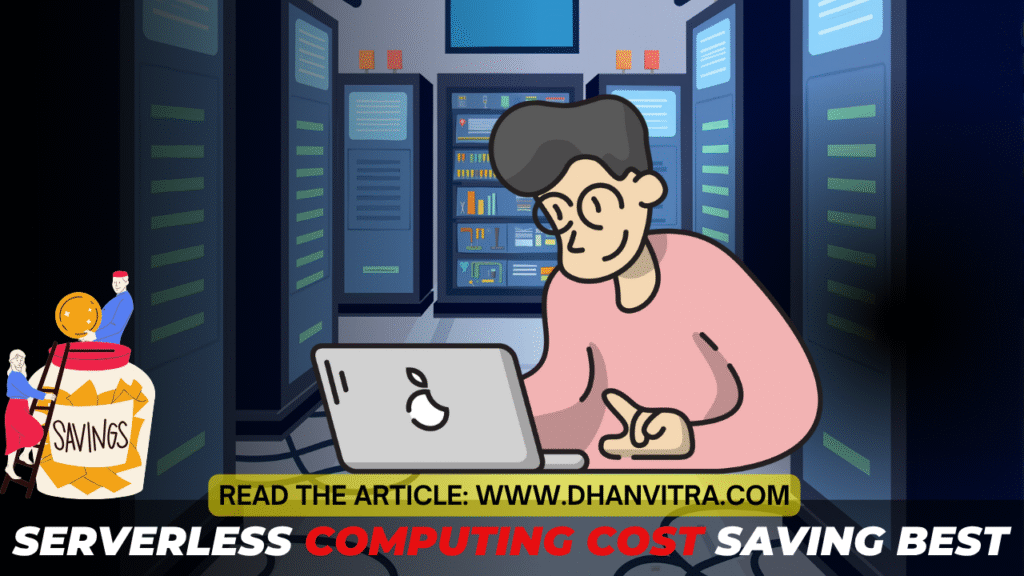
Welcome to Dhanvitra, your go-to hub for practical tips and strategies to save money while getting the most value. Today, we’re diving into something that affects every business using the cloud: AWS infrastructure costs. If you’ve ever opened your cloud bill and felt a little shock, you’re not alone. Cloud spending can grow rapidly, often without our notice. How to Reduce Cloud Infrastructure Costs AWS.
The key? Smart shopping for cloud resources. Just like you wouldn’t buy groceries without checking prices or deals, you shouldn’t run your cloud environment without knowing where your money is going. Small changes can make a huge difference. Right-sizing servers, picking the right pricing plans, and cleaning up unused storage can save you hundreds—or even thousands—of dollars each month.
In this article, we’ll walk you through 7 proven tips to reduce AWS cloud costs. I’ll keep it simple, practical, and actionable. No tech jargon, no fluff—just real strategies you can apply today. By the end, you’ll see how small, smart adjustments can lead to big savings and better cloud efficiency.
If you’ve ever looked at your AWS bill and thought, “Wait, how did this get so high?” you’re not alone. AWS is powerful, but its pricing can be confusing. You pay for what you use. Sounds simple, right? But with dozens of services, multiple storage options, and various instance types, costs can spike quickly without you even realizing it.
AWS pricing is mostly usage-based. This means every EC2 instance, S3 bucket, and data transfer adds up. Even leaving a small instance running overnight can cost more than you expect. And then there are hidden charges, like data transfer between regions or snapshots that pile up over time.
Understanding your costs starts with visibility. You need to know which services are eating your budget. Tools like AWS Cost Explorer can help. They let you see trends, spot unusual spikes, and plan your budget. Without visibility, you’re flying blind. And in cloud computing, blind flights are expensive.
Table of Contents
How to Reduce Cloud Infrastructure Costs AWS 7 Tips.
Tip 1 – Right-Size Your Resources
Right-sizing your resources is like cleaning out your closet. You want to keep what fits and get rid of what’s taking up space. In AWS, this means identifying instances that are over-provisioned or idle.
Start by checking your EC2 instances. Are you running a large instance at 5% CPU most of the time? That’s money down the drain. Downgrading to a smaller instance or stopping unused instances can save big.
AWS Trusted Advisor is a great friend here. It analyzes your environment and gives recommendations. You can see which instances are underutilized and which ones are oversized. Once you right-size, you reduce costs immediately and keep your performance optimized.
Think of it this way: You’re not cutting corners. You’re just making sure every dollar works as hard as it can. Right-sizing also includes checking storage. Are there old EBS volumes or snapshots you no longer need? Cleaning those up adds even more savings.
Tip 2 – Leverage Reserved and Savings Plans
If you know you’ll use certain services for a long time, don’t pay full price. Reserved Instances and Savings Plans let you commit to usage for one or three years in exchange for big discounts.
Reserved Instances work like subscriptions. You commit to a specific instance type and region, and AWS gives you up to 75% off compared to on-demand prices. It’s perfect for steady workloads, like a web server that runs 24/7.
Savings Plans are even more flexible. They focus on your overall usage rather than specific instance types. So if your workloads shift, you still save money. Think of it as paying upfront for a gym membership—you commit, and you get a discount for consistency.
The key is analyzing your usage patterns first. Don’t commit blindly. Look at what runs constantly and what spikes occasionally. Commit only to steady workloads, and you’ll see real savings.
Tip 3 – Utilize Spot Instances for Flexible Workloads
Spot Instances are like last-minute flight deals. AWS offers unused compute capacity at huge discounts—sometimes up to 90% off. The catch? AWS can take them back anytime if it needs the resources.
They’re perfect for tasks that can handle interruptions, like batch processing, testing, or data analysis. You can run big jobs at a fraction of the cost. Combine them with automation tools like EC2 Auto Scaling or Spot Fleet, and you can get almost all the benefits without constant monitoring.
Think of it as renting a car on demand versus owning one. You pay way less, but you need to be ready to switch plans if the car isn’t available. Spot Instances let you save massively, but only if your workloads are flexible enough to adapt.
Tip 4 – Optimize Storage Costs
Storage can quietly eat up a huge part of your AWS bill if you’re not careful. Many people leave old data sitting in expensive storage tiers without realizing it. AWS offers multiple options, and knowing the right one for your needs can save you a ton. For example, Amazon S3 has different tiers like Standard, Intelligent-Tiering, and Glacier. Each has a different cost structure.
I like to think of it like your closet at home. You don’t keep your winter coat in the middle of summer. Similarly, you don’t need all your data in high-performance storage if it’s rarely accessed. You can set up lifecycle policies that automatically move old files to cheaper storage.
Another cost trap is unused EBS volumes and snapshots. Many teams create them for experiments and forget about them. Regularly cleaning these up is like tidying up your workspace — it makes everything more efficient. Even deleting a few forgotten snapshots can shave dollars off your monthly bill.
Tip 5 – Monitor and Analyze with AWS Cost Explorer
You can’t control what you don’t measure. AWS Cost Explorer is your best friend here. It shows you exactly where your money is going. You can create custom reports, track spending trends, and even forecast future costs.
Think of it as having a dashboard for your wallet. You can see which services are consuming the most resources and which accounts are overspending. The visual charts make it easy to spot anomalies. Did a service suddenly spike in usage last week? Cost Explorer will show it.
I recommend checking this at least once a week. Spotting small issues early prevents big surprises at the end of the month. You can also tag resources by project or department, which makes it easier to allocate costs correctly. It’s like having multiple envelopes in your budget for different expenses — everything stays organized.
Tip 6 – Implement Auto Scaling
Auto Scaling is a game-changer for cost optimization. Instead of running large servers all the time, you can automatically adjust resources based on demand. When traffic spikes, Auto Scaling adds instances. When it drops, it removes them. You only pay for what you use.
Imagine hosting a party. You don’t set up 100 chairs if only 20 guests show up. Auto Scaling works the same way for your cloud infrastructure. You can configure scaling policies to match CPU usage, network traffic, or custom metrics.
The cost savings can be huge. Many businesses run their workloads at 50-70% lower cost just by using Auto Scaling. Plus, it keeps performance consistent, so your users never notice the difference.
Tip 7 – Use Third-Party and Native Cost Management Tools
AWS has a lot of native tools, but sometimes third-party tools can give deeper insights. Tools like CloudHealth, Spot.io, and CloudCheckr help you identify inefficiencies, track trends, and automate cost-saving actions.
I see these tools as personal trainers for your cloud account. They don’t just tell you what’s wrong — they guide you to fix it. You can set alerts, optimize unused resources, and even get recommendations for switching to cheaper instances.
The key is balance. Don’t rely entirely on automation. Combining these tools with your own regular checks ensures you’re always in control. This approach makes cost management proactive instead of reactive.
Additional Strategies
Optimizing AWS costs isn’t just about individual tips — it’s about creating good habits. Tagging and organizing resources is one of the simplest yet most effective strategies. When everything is labeled by project or department, you can track spending easily.
Another approach is building a FinOps culture. This means educating your team about cloud costs, setting budgets, and encouraging accountability. When everyone understands the financial impact of their actions, they make smarter choices.
Finally, don’t ignore small leaks. Idle resources, forgotten snapshots, or test environments left running can quietly inflate your bills. Regular reviews and clean-ups keep your infrastructure lean and efficient.
The bottom line? Cost optimization is a continuous process. Combining smart tools, proactive monitoring, and a culture of accountability ensures you get the most value from your AWS cloud.
Common Mistakes to Avoid
When it comes to managing AWS costs, even small slip-ups can create big bills. One mistake I see often is ignoring idle resources. It’s tempting to leave instances running “just in case,” but those idle hours quickly add up. You might think leaving a few small instances on won’t matter, but multiply that across your accounts and regions, and the costs skyrocket.
Another trap is over-provisioning. Many teams allocate more memory or CPU than they actually need. I know it feels safer to have extra power, but in reality, it just inflates your bill. Right-sizing isn’t just a recommendation; it’s a necessity for smart cloud spending.
Many businesses also fail to review their cloud bills regularly. You might have a detailed report once a quarter, but by then, overspending has already occurred. Daily or weekly reviews help you spot spikes early.
Lastly, skipping tagging and organization is a huge mistake. Without proper tags, you’ll struggle to track who is using what. This makes cost accountability almost impossible and slows down any optimization efforts. Treat tagging like labeling files in your home office — it may feel tedious, but it saves you headaches later.
Future Trends in AWS Cost Optimization
Looking ahead, AWS cost optimization is becoming smarter and more automated. AI-driven cost management is already changing the game. Imagine tools that predict your future cloud usage and automatically adjust resources to avoid overspending. You no longer have to guess; the system does it for you.
Predictive scaling is another trend. Instead of just reacting to traffic spikes, AWS tools can now anticipate demand. This means resources scale up or down before you need them, saving money and keeping performance steady.
Sustainability is also gaining traction. Companies are starting to optimize costs with energy efficiency in mind. Running workloads in regions with lower carbon footprints or using renewable-powered data centers can reduce both bills and environmental impact.
Finally, FinOps practices are evolving. It’s not just about IT controlling costs anymore. Finance, operations, and engineering teams work together to make cloud spending transparent, accountable, and strategic. The future of cost optimization is collaborative, automated, and smarter than ever.
Conclusion
Reducing AWS cloud costs doesn’t have to be complicated. By right-sizing resources, leveraging reserved and spot instances, optimizing storage, monitoring usage, and using auto-scaling, you can trim unnecessary expenses without hurting performance.
Remember, avoiding common mistakes like idle resources, over-provisioning, and poor tagging is just as important as implementing best practices. And keep an eye on future trends — AI, predictive scaling, and sustainability are not just buzzwords; they’re real tools to save money.
The key takeaway? Optimization is ongoing. Your cloud infrastructure isn’t static, so your cost management shouldn’t be either. Make small, consistent improvements, and over time, you’ll see major savings.
FAQs
How often should I review my AWS usage and costs?
I recommend at least weekly. Daily checks are ideal if you have a large infrastructure, but weekly reviews usually catch spikes early enough to act.
Can small businesses benefit from AWS cost optimization strategies?
Absolutely. Even if you run a few instances, small changes like right-sizing and using Savings Plans can significantly lower your bills.
Are Spot Instances safe for production workloads?
Spot Instances are best for flexible workloads that can handle interruptions. For critical production systems, combine them with On-Demand or Reserved Instances.
What is the simplest way to start optimizing AWS costs?
Start with cost visibility. Use AWS Cost Explorer and tagging. Knowing where your money goes is the first step to controlling it.
How can AI help in reducing cloud costs?
AI can predict usage patterns, recommend resource adjustments, and automate scaling. This reduces human error and ensures you’re never paying for idle resources unnecessarily.









